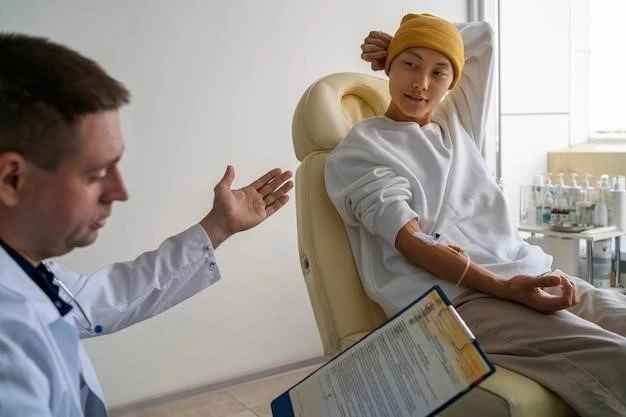Introduction to Tetrasomy 9p
Tetrasomy 9p, a rare chromosomal disorder, involves the presence of two extra copies of the short arm of chromosome 9. The syndrome was first identified in 1973 and is associated with varied clinical manifestations.
Definition and Description
Tetrasomy 9p is a rare chromosomal abnormality characterized by the presence of two extra copies of the short arm of chromosome 9, known as the ″p″ arm. This condition can manifest differently in affected individuals, leading to varied clinical features.
Chromosomal Abnormality
Tetrasomy 9p is a rare chromosomal abnormality characterized by the presence of four copies of the short arm of chromosome 9, leading to genetic imbalances and potential variations in phenotypic expression.
Mechanism of Tetrasomy 9p Formation
Tetrasomy 9p is typically formed through the presence of a supernumerary isochromosome 9p. This chromosomal abnormality can result from various genetic mutations, leading to the duplication of genetic material on the short arm of chromosome 9, ultimately causing the tetrasomy 9p syndrome with characteristic clinical features.
Clinical Features
The clinical features of Tetrasomy 9p include a wide range of physical and developmental abnormalities, with symptoms varying across affected individuals. Commonly observed issues include delayed growth, facial dysmorphism, congenital heart disease, and intellectual disability.
Varied Symptoms
People with Tetrasomy 9p may exhibit a range of symptoms, including delayed growth, facial dysmorphism, congenital heart defects, and intellectual disabilities. The severity and combination of these features can vary among individuals.
Diagnosis
Diagnosing Tetrasomy 9p typically involves chromosomal analysis to identify the presence of four copies of the short arm of chromosome 9. Clinical evaluation and genetic testing are crucial for accurate diagnosis and understanding the extent of genetic imbalances associated with this rare chromosomal abnormality.
Diagnostic Process
The diagnostic process for Tetrasomy 9p involves chromosomal analysis to identify the presence of four copies of the short arm of chromosome 9. Genetic testing and clinical evaluation play vital roles in confirming the diagnosis and understanding the genetic imbalances linked to this rare chromosomal abnormality.
Tetrasomy 9p Syndrome
Tetrasomy 9p, also known as tetrasomy 9p syndrome, is a rare chromosomal disorder characterized by the presence of two additional copies of the short arm of chromosome 9 (9p) compared to the typical two copies. Individuals with tetrasomy 9p exhibit a range of symptoms, including delayed growth, abnormal facial features, and intellectual disability, with variations observed among affected individuals.
Characteristics and Patterns of Anomalies
Tetrasomy 9p syndrome is characterized by the presence of two additional copies of the short arm of chromosome 9, leading to a spectrum of physical and developmental abnormalities. The clinical presentation can include delayed growth, abnormal facial features, congenital heart defects, and intellectual disabilities. Patterns of anomalies may vary among individuals, emphasizing the diversity of symptoms associated with this rare chromosomal disorder.
Genetic Mutations
Tetrasomy 9p can result from genetic mutations, either hereditary or random, leading to the presence of two extra copies of the short arm of chromosome 9. The genetic alterations play a critical role in the development of this rare chromosomal abnormality.
Hereditary vs. Random Mutations
Tetrasomy 9p can be caused by genetic mutations, which may be inherited from parents or occur randomly during cell division processes. Understanding the origin of these mutations is crucial for determining the genetic basis of this rare chromosomal abnormality.
Prenatal Detection
Early detection of Tetrasomy 9p through ultrasound during prenatal examinations provides crucial insight into the presence of four copies of the short arm of chromosome 9٫ aiding in early diagnosis and potential management strategies. Identifying this rare chromosomal abnormality prenatally enables appropriate medical care planning and support for affected individuals and families.
Ultrasound Identification
Ultrasound technology plays a vital role in identifying Tetrasomy 9p during prenatal screenings by detecting the presence of four copies of the short arm of chromosome 9. Early ultrasound detection enables healthcare providers to evaluate fetal development and plan appropriate medical interventions for addressing potential challenges associated with this chromosomal abnormality.
Management and Support
Management of Tetrasomy 9p involves multidisciplinary care to address varied clinical needs. Providing support and resources for individuals and families navigating the challenges associated with this rare chromosomal disorder is essential for enhancing quality of life and overall well-being.
Living with Tetrasomy 9p
Individuals with Tetrasomy 9p face a range of challenges related to the genetic imbalance, including developmental delays, facial abnormalities, and potential health complications. Managing these issues requires comprehensive care and ongoing support to enhance the quality of life for those affected by this rare chromosomal disorder.
Research on Tetrasomy 9p focuses on understanding the genetic and clinical aspects of this rare chromosomal disorder. Case studies offer valuable insights into the varied manifestations and management strategies for individuals affected by Tetrasomy 9p syndrome.

Research and Case Studies
Exploring various research studies and reported cases of Tetrasomy 9p syndrome provides valuable insights into the genetic and clinical characteristics of this rare chromosomal disorder. Case studies offer essential information for understanding the patterns of anomalies and management strategies implemented in individuals with Tetrasomy 9p.
Complications and Prognosis
Tetrasomy 9p can lead to various complications and challenges due to the presence of four copies of the short arm of chromosome 9. The prognosis for individuals with Tetrasomy 9p may vary based on the severity of symptoms and associated health issues, highlighting the importance of personalized medical care and support.
Associated Complications
Complications associated with Tetrasomy 9p may include developmental delays, growth restriction, congenital heart defects, and facial dysmorphism. The prognosis and challenges faced by individuals with Tetrasomy 9p depend on the severity of these complications and the management strategies implemented to address them, emphasizing the importance of comprehensive medical care and support.

Rare Disease Status
Tetrasomy 9p is classified as a rare chromosomal anomaly characterized by the presence of four copies of the short arm of chromosome 9. The condition is considered rare and presents with distinct clinical features that require specialized medical management and support.
Incidence and Symptoms
The incidence of Tetrasomy 9p is rare, with unique symptoms such as pre- and postnatal growth retardation, psychomotor delay, intellectual disability, microcephaly, dysmorphic features, and ocular abnormalities. Symptoms may vary in severity among affected individuals, highlighting the diverse clinical presentation associated with this chromosomal anomaly.
Medical Advances
Advancements in medical understanding and technology have enhanced the diagnosis and management of Tetrasomy 9p٫ offering improved insights into the genetic and clinical complexities of this rare chromosomal abnormality. Research continues to drive progress in identifying optimal treatment approaches and support strategies for individuals affected by Tetrasomy 9p.
Treatment Options
Currently, there is no specific treatment for Tetrasomy 9p. Management typically involves addressing individual symptoms and complications through a multidisciplinary approach, including early developmental interventions, specialized medical care, and supportive therapies tailored to the unique needs of each individual. Research and advancements in medical science continue to explore potential therapeutic interventions to enhance the quality of life for individuals with Tetrasomy 9p.
Support Networks
Accessing support networks is crucial for individuals and families affected by Tetrasomy 9p. These networks provide valuable resources, guidance, and emotional support to navigate the unique challenges associated with this rare chromosomal abnormality. Connecting with support groups and organizations can offer a sense of community and assistance in managing the complexities of Tetrasomy 9p.
Resources for Tetrasomy 9p Patients
Accessing resources for individuals with Tetrasomy 9p is vital for comprehensive care. Support networks, medical professionals, genetic counselors, and advocacy organizations offer valuable assistance, guidance, and emotional support to individuals and families navigating the challenges associated with this rare chromosomal disorder. These resources provide crucial information, enhance access to specialized care, and promote a supportive community for those impacted by Tetrasomy 9p.
Conclusion and Future Outlook
In conclusion, Tetrasomy 9p, a rare chromosomal disorder involving the presence of four copies of the short arm of chromosome 9, presents diverse clinical manifestations that require specialized care and support. Research advancements continue to enhance our understanding of this condition, leading to improved diagnostic and management strategies. The future outlook for individuals with Tetrasomy 9p involves integrating multidisciplinary approaches, leveraging support networks, and harnessing medical advances to optimize outcomes and quality of life for those impacted by this rare chromosomal abnormality.
